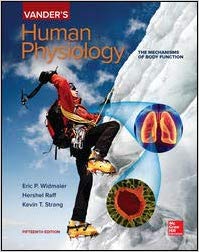In Stock
Test Bank For Human Biology 16th Edition By Sylvia Mader
Edition: 16th Edition
Format: Downloadable ZIP Fille
Resource Type: Test bank
Duration: Unlimited downloads
Delivery: Instant Download
$20.00
Test Bank For Human Biology 16th Edition By Sylvia Mader
Human Biology, 16e (Mader)
Chapter 1 Exploring Life and Science
1) The scientific study of life is called
- A) biology.
- B) ecology.
- C) anatomy.
- D) biochemistry.
- E) limnology.
2) A complex individual that consists of organ systems is known as a(n)
- A) community.
- B) population.
- C) organism.
- D) tissue.
- E) species.
3) All of the ecosystems on the planet together are called the
- A) atmosphere.
- B) hydrosphere.
- C) biosphere.
- D) lithosphere.
- E) stratosphere.
4) In a swamp, all of the alligators would represent a(n)
- A) organism.
- B) population.
- C) community.
- D) ecosystem.
- E) biosphere.
5) The region in which populations interact with each other and with the physical environment is called a(n) community.
6) The region in which populations interact with each other and with the physical environment is called a(n)
- A) entity.
- B) ecosystem.
- C) biosystem.
- D) community.
- E) biosphere.
7) All of the changes that occur starting from the time an egg is fertilized and continuing through childhood, adolescence, and adulthood are called
- A) metabolism.
- B) evolution.
- C) homeostasis.
- D) reproduction.
- E) development.
8) Which of the following statements most correctly defines homeostasis?
- A) All living organisms are alike.
- B) Living organisms do not change much over time.
- C) Human beings and other animals acquire materials and energy when they eat food.
- D) It takes energy to maintain the organization of the cell.
- E) Cells and organisms maintain a fairly constant internal environment.
9) The face of a sunflower turns to follow the sun as it moves across the sky. This is an example of
- A) metabolism.
- B) homeostasis.
- C) response to stimuli.
- D) development.
- E) reproduction.
10) Choose the correct order (1–5) of increasing complexity/organization.
- A) (1) tissues, (2) organ systems, (3) cells, (4) organs, (5) organism
- B) (1) cells, (2) organ systems, (3) tissues, (4) organs, (5) organism
- C) (1) tissues, (2) organs, (3) organ systems, (4) cells, (5) organism
- D) (1) cells, (2) tissues, (3) organs, (4) organ systems, (5) organism
- E) (1) organism, (2) organ systems, (3) organs, (4) tissues, (5) cells




